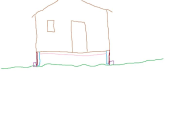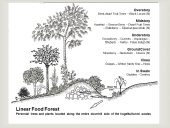Nancy,
I had the backhoe dig ~2'x2' ditches on contour. We then dropped 70% cottonwood, 30% old pine logs into the bottom and followed aged pine and cottonwood slash back to the original grade. The backhoe then compacted the wood and pushed the dirt back over the top. The swales have stayed moist since built last april, the plants love it and so do the moles. We are at ~6300ft in a valley frost pocket. I will say that we are very lucky to have incredible black dirt (old creek confluence I think). My experience so far in Beulah and also at our house in Colorado Springs is that burying organic matter with dirt on contour no matter how small has helped with moisture and long term fertility. I do usually try to include some manure/compost in the mix, but didn't bother in Beulah.
Ryan










